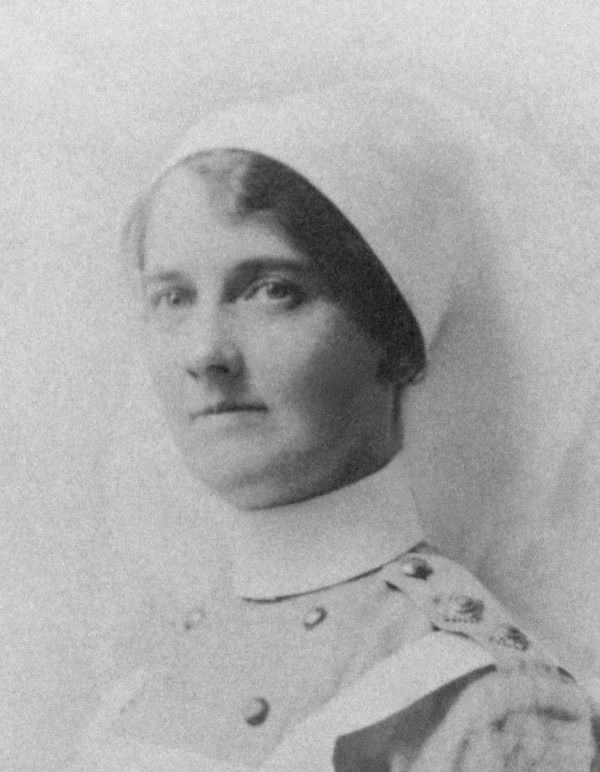Personal Profile Collections

Monica Connell
Short Biography:
Monica Connell was born on October 4, 1885, in New Victoria, a small coastal community located near the mouth of Sydney Harbour, in Cape Breton, NS. She was one of nine children born to Lawrence and Eliza Connell. Monica grew up in the local area and graduated from St. Joseph’s Hospital School of Nursing in 1909. St. Joseph’s Hospital was a 100 bed hospital located in Glace Bay. In December, 1915, she was approved for an appointment as a nursing sister in the Canadian Army Medical Corps.
On April 3, 1916, Monica enlisted with the rank of nursing sister in the No. 9 Canadian Stationary Hospital. Following the lead of other Canadian universities at the time, this medical unit was created for overseas duty by St. Francis Xavier College located in Antigonish. Overseas, stationary hospitals typically had from 200 to 650 beds housed in large tents. They were located behind the front lines where they accepted wounded soldiers from the casualty clearance stations. After three months of recruitment on campus in Antigonish, the No. 9 Stationary Hospital mobilized in Halifax on May 4, 1916. Its medical officers completed Canadian Army Medical Corps courses at Cogswell Street Military Hospital in Halifax, while the nursing sisters were posted to local hospitals. On June 19, 1916, The No. 9 Canadian Stationary Hospital departed Halifax on the SS Missanabie and arrived in Liverpool, England, on June 29th.
Upon arrival in England, the male staff resumed training at Shorncliffe Military Hospital, near Folkestone, while the nursing sisters reported to London area hospitals for duty and additional training. Monica was posted to the Duchess of Connaught Red Cross Hospital. On September 26, 1916, she rejoined the No. 9 Canadian Stationary Hospital and shortly after they assumed responsibility for the operation of Bramshott Military Hospital in the village of Bramshott located south of London. It was adjacent to Camp Bramshott, a temporary army camp established by the Canadian Army. They treated Canadian soldiers, mostly for communicable diseases such as mumps, measles, personal illness, accidental injuries, and later influenza cases. It would be over a year before the No. 9 Stationary Hospital would be transferred to France. During that time, many of its original personnel left the unit seeking postings in France, closer to the action. In Monica’s case, she stayed at Bramshott for close to a year before proceeding to France on September 21, 1917, where she was posted to the No. 7 Stationary Hospital, a Nova Scotia unit created by the medical faculty of Dalhousie University in Halifax. When Monica joined them they were operating in Arques, France.
In early 1918, Monica made an application requesting home service on compassionate grounds. She wanted to be able to assist a relative who had received a severe injury from the Halifax Explosion. Her application was approved and she returned to Canada where she reported for duty on February 23, 1918. She was posted to the Canadian Army Medical Corps for duty under the Assistant Director of Medical Services. On January 4, 1919, she was transferred to Moxham Military Hospital in Sydney, NS, a large stone mansion donated to the Canadian government to be used as a rehabilitation hospital for wounded servicemen. Monica worked there until her demobilization on May 26, 1919.
After the war, it is believed Monica worked as a nurse in Boston, USA and later lived in Montreal, Quebec. She passed away in Montreal on March 12, 1956 at the age of 70.